I recently received an email from a group called, “Don’t Hold Us Back.” They’re a coalition who have taken out full-page ads in major newspapers proposing that United Teachers Los Angeles and The Los Angeles Unified School District complete negotiations on a contract within 30 days, and they’re encouraging readers to call and email leaders of UTLA and LAUSD to encourage adoption of their agenda. Among their demands is a proposal to incorporate student test scores in teacher evaluations, despite the 25% error rate, as has widely been reported.
I called and emailed the following organizations, as listed on the website, to find out why they would propose such a flawed evaluation system: Alliance for a Better Community, Asian Pacific American Legal Center (APALC), Community Coalition, Families in Schools, Families That Can, InnerCity Struggle, Communities for Teaching Excellence, Los Angeles Urban League, Union de Vecinos, United Way of Greater Los Angeles, Watts/Century Latino Organization, and the Southern Christian Leadership Conference.
I asked each the same question I recently asked of Obama, Duncan, etc. “According to the US Department of Education report, Error Rates in Measuring Teacher and School Performance Based on Student Test Score Gains, an effective teacher could be rated as ineffective 25% of the time, and an ineffective teacher could be rated as effective 25% of the time, so, my question is, what is an acceptable rate of error when your job is on the line?”
One of the organizations indicated that they would not be issuing an official response. Another stated they would not be commenting. Another indicated that they would respond by my deadline — they didn’t follow-up.
Executive Director Angelica M. Solis of Alliance for a Better Community issued a 380-word response reiterating their support for the proposal, and referenced a “2011 study published in the journal Labour Economics.” When I inquired as to the specific study referenced in the email, I did not receive a response.
Taulene Kagan, Marketing Communications Director for the United Way of Greater Los Angeles, issued a 122-word response indicating, in part, that, “the research report you refer to clearly states that potential statistical misclassification would be mitigated if multiple measures over time are used.” When I responded, “please kindly indicate where the research report specifically states that potential statistical misclassification would be mitigated by using multiple measures over time,” I did not receive a reply.
By far the most curious response was from Elizabeth Blaney & Leonardo Vilchis of Union de Vecinos. Both separately voiced disapproval for efforts to tie teacher pay to student performance on standardized tests. Leonardo wrote: “we do not support connecting teacher’s pay to student standardized test performance, for the reasons you describe and others that include the problems with standardized testing. However, we believe that there has to be more evaluation of teachers that includes community and student input. We also believe that principals and supervisors need to be more thorough in their evaluation process.”
I inquired further, in part, writing: “You do realize that you’re listed as a supporter of ‘Don’t Hold Us Back,’ don’t you? Secondly, one of their proposals is to incorporate ‘academic growth over time’. Are you now withdrawing your support, or, can you explain, please, why you’re listed as a supporter, yet, based on your own statement, you don’t support the proposal itself?” I did not receive a response.
Simply incorporating a meaningless, random number that in no way reflects the complexity of teaching will not address bridging the achievement gap. How would it affect your on the job productivity if we flipped a quarter four times, and every one out of those four times you were given a below satisfactory evaluation no matter your actual real life job performance?
Given Union de Vecinos’ position on using standardized tests as part of teacher evaluation, how many of the other groups that signed on to this platform also oppose using test score information in teacher evaluations? What’s an acceptable level of error when your job is on the line? Care to flip a coin to determine your response to that question?









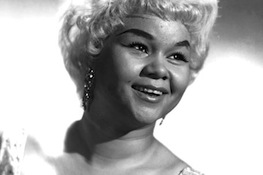
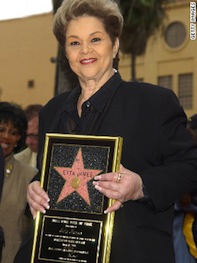 Etta James receiving her star on the Hollywood Walk of Fame, 2003.
Etta James receiving her star on the Hollywood Walk of Fame, 2003. Etta James posing with one of her biggest celebrity fans, Christina Aguilera, 2006.
Etta James posing with one of her biggest celebrity fans, Christina Aguilera, 2006.
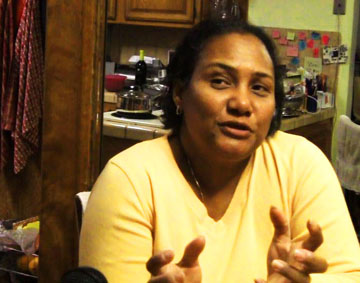 South LA resident Donna Washington is one of many disappointed by the lack of quality produce available in her community.
South LA resident Donna Washington is one of many disappointed by the lack of quality produce available in her community. Produce from a high-quality Ralphs.
Produce from a high-quality Ralphs.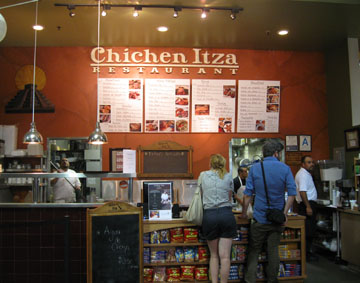 The Mercado La Paloma is a charming and vibrant space filled with restaurants and non-profit organizations. Chichen Itza is a Yucatan restaurant at the center of the Mercado, not only for where it is situated in the market, but for its eleven successful years in business. Chef Gilberto Cetina and his son, Gilberto Cetina Jr., have been at the Mercado since day one. Their story warms the heart, and their food satisfies the belly.
The Mercado La Paloma is a charming and vibrant space filled with restaurants and non-profit organizations. Chichen Itza is a Yucatan restaurant at the center of the Mercado, not only for where it is situated in the market, but for its eleven successful years in business. Chef Gilberto Cetina and his son, Gilberto Cetina Jr., have been at the Mercado since day one. Their story warms the heart, and their food satisfies the belly.
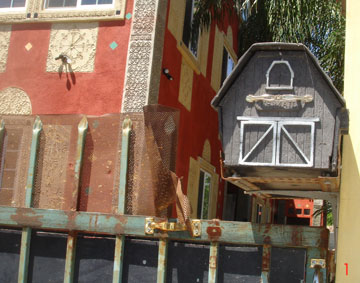 The front gate of the building on W. 49th St., where over 40 tenants shared a single mailbox. (Photo by Javier Cortez)
The front gate of the building on W. 49th St., where over 40 tenants shared a single mailbox. (Photo by Javier Cortez) The tenants shared a community kitchen, where there were multiple refrigerators to fill the demand. (Photo by Javier Cortez)
The tenants shared a community kitchen, where there were multiple refrigerators to fill the demand. (Photo by Javier Cortez)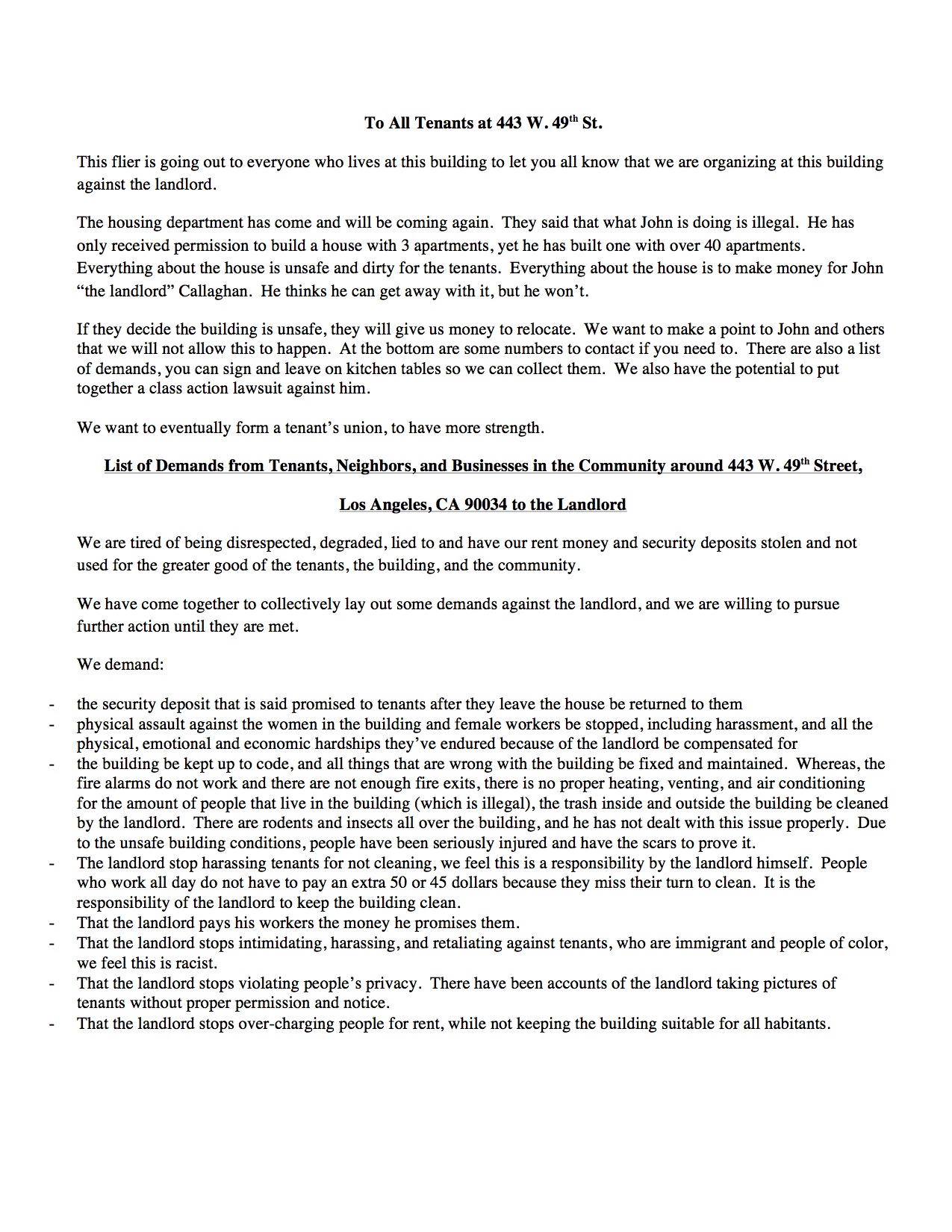
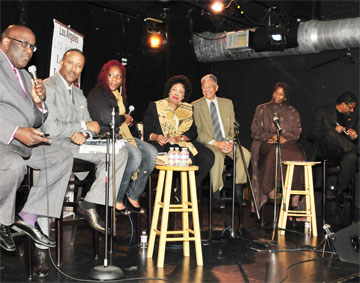 Photo credit: Ian Foxx
Photo credit: Ian Foxx From a back alley in Wilmington, illuminated by the twinkling lights of the nearby oil refinery, the sounds of the Mexican-drug war come alive on a windy Wednesday evening — not through gun shots, police sirens or the wailing of widowed mothers — but through song.
From a back alley in Wilmington, illuminated by the twinkling lights of the nearby oil refinery, the sounds of the Mexican-drug war come alive on a windy Wednesday evening — not through gun shots, police sirens or the wailing of widowed mothers — but through song.




